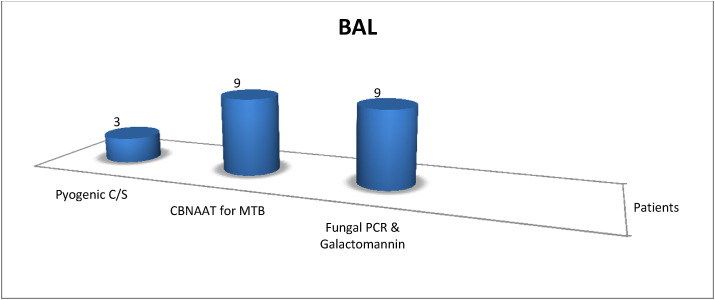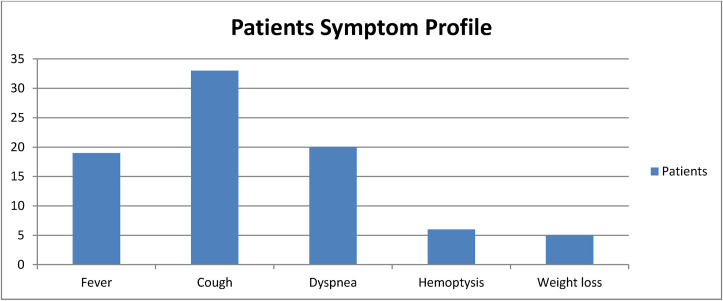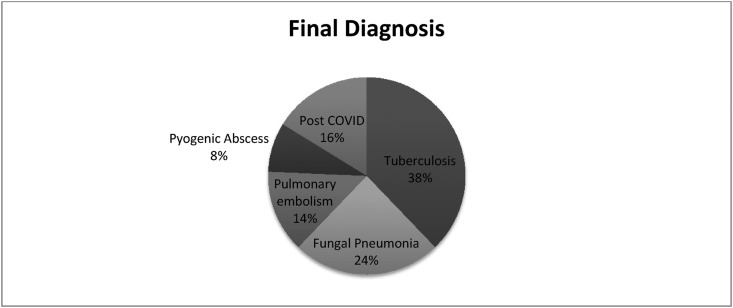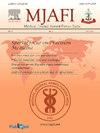COVID 2019 后续病例中的肺空洞症:病因学视角
Q2 Medicine
引用次数: 0
摘要
背景:目前的 COVID-19 大流行是一个持续的全球医疗挑战,它造成的发病率和死亡率达到了前所未有的水平。由于 COVID 后的肺部并发症不断演变且具有挑战性,因此开展了一项研究,从病因学角度评估 COVID 随访病例中的肺空洞症。本研究旨在评估中度和重度 COVID 后肺炎患者肺空洞症的发生率,并描述其病因和演变情况:方法:对本院收治的所有中度或重度 COVID 肺炎患者进行前瞻性观察研究。其中一些患者在出院后再次出现症状,并在影像学检查中出现肺空洞:结果:在我院收治的 589 例中度或重度 COVID 肺炎患者中,6.2%(n = 37)的患者在随访时出现了肺空洞。我们描述了 COVID 后空洞症的影像学特征,并介绍了这些患者的临床、实验室和微生物学参数:结论:中重度 COVID-19 患者出现肺空洞症并不少见,有必要进行病因学检查,以便及时采取正确的治疗措施。本文章由计算机程序翻译,如有差异,请以英文原文为准。



Pulmonary cavitation in follow-up COVID 2019 cases: An etiological perspective
Background
The current COVID-19 pandemic is an ongoing global healthcare challenge that has caused morbidity and mortality at unprecedented levels. Since the post-COVID pulmonary complications are evolving and challenging, a study was carried out to assess pulmonary cavitation in follow-up COVID cases from an etiological perspective. The aim of this study was to assess the incidence of pulmonary cavitation and describe its etiology and evolution in moderate and severe post-COVID pneumonia patients.
Methods
A prospective observational study of all patients admitted to our institution with moderate or severe COVID pneumonia was carried out. Some of these patients again became symptomatic after discharge and developed pulmonary cavitation on imaging.
Results
6.2% (n = 37) out of 589 patients admitted to our institution with moderate or severe COVID pneumonia developed pulmonary cavitation on follow-up. We describe the imaging characteristics of post-COVID cavitation and present these patients' clinical, laboratory, and microbiological parameters.
Conclusion
Cavitary lung disease in patients with moderate to severe COVID-19 disease is not uncommon, and an etiological workup is necessary to institute timely and correct therapy.
求助全文
通过发布文献求助,成功后即可免费获取论文全文。
去求助
来源期刊

Medical Journal Armed Forces India
Medicine-Medicine (all)
CiteScore
3.40
自引率
0.00%
发文量
206
期刊介绍:
This journal was conceived in 1945 as the Journal of Indian Army Medical Corps. Col DR Thapar was the first Editor who published it on behalf of Lt. Gen Gordon Wilson, the then Director of Medical Services in India. Over the years the journal has achieved various milestones. Presently it is published in Vancouver style, printed on offset, and has a distribution exceeding 5000 per issue. It is published in January, April, July and October each year.
 求助内容:
求助内容: 应助结果提醒方式:
应助结果提醒方式:


